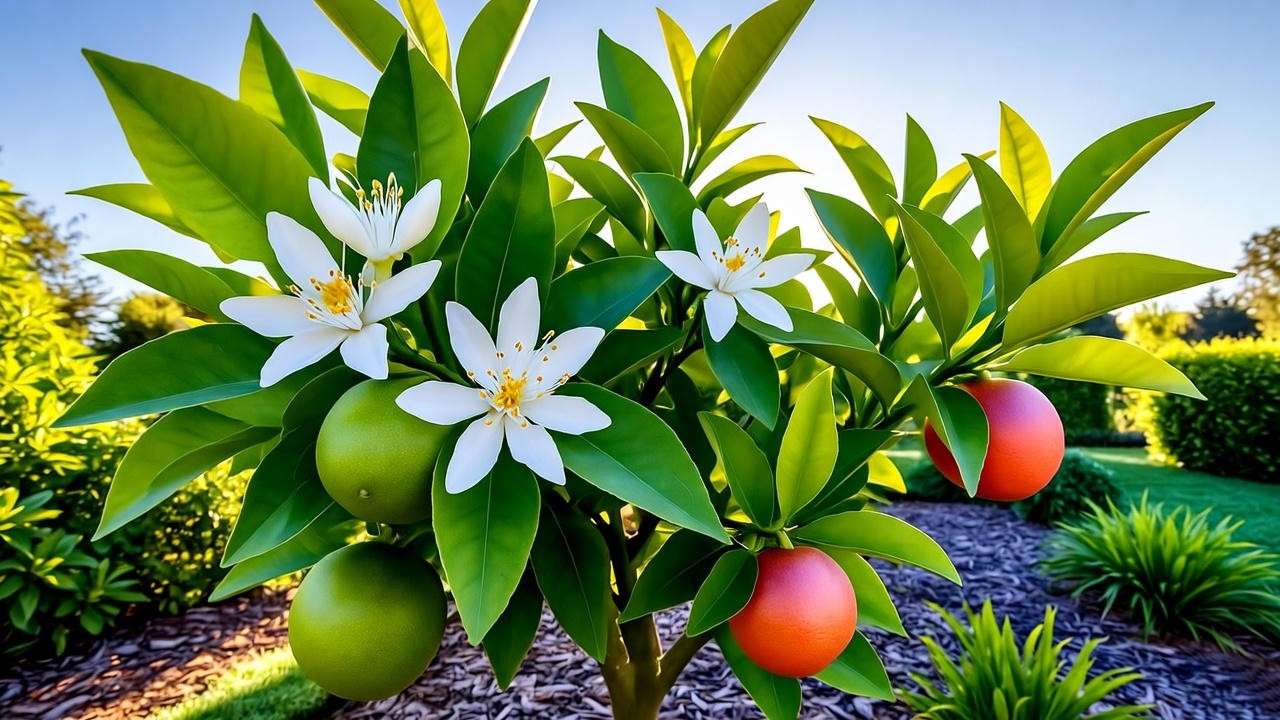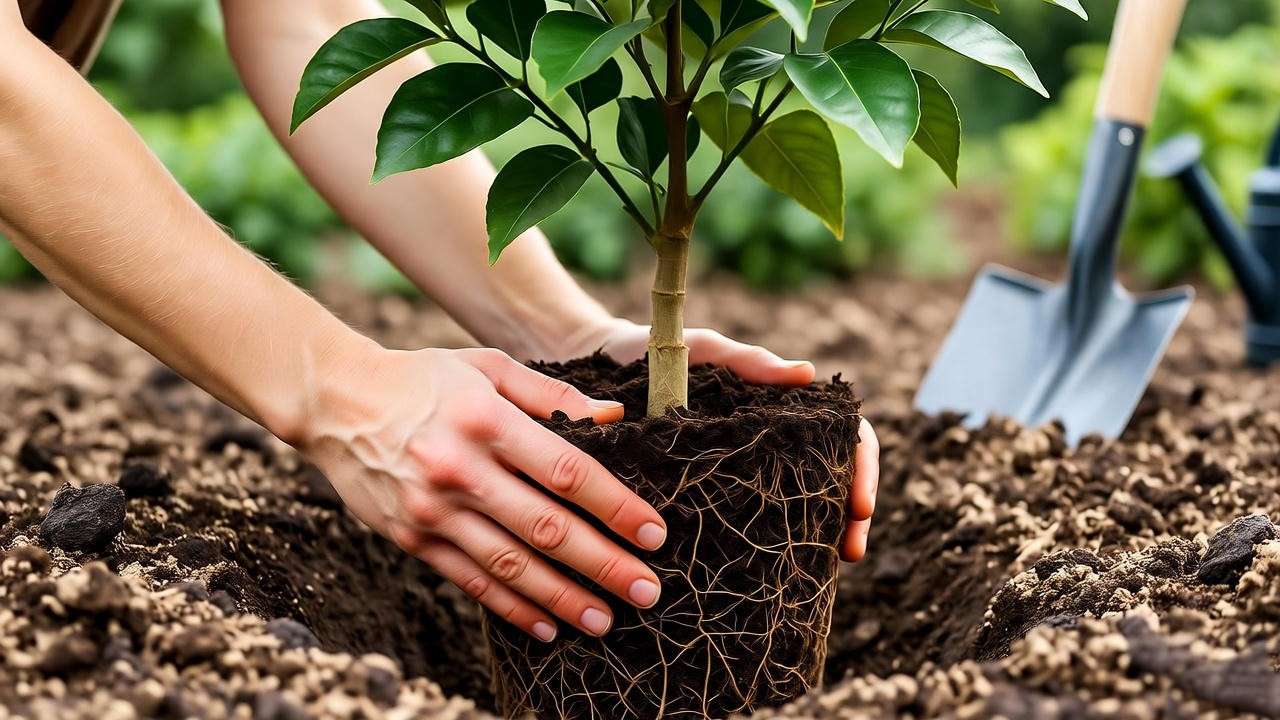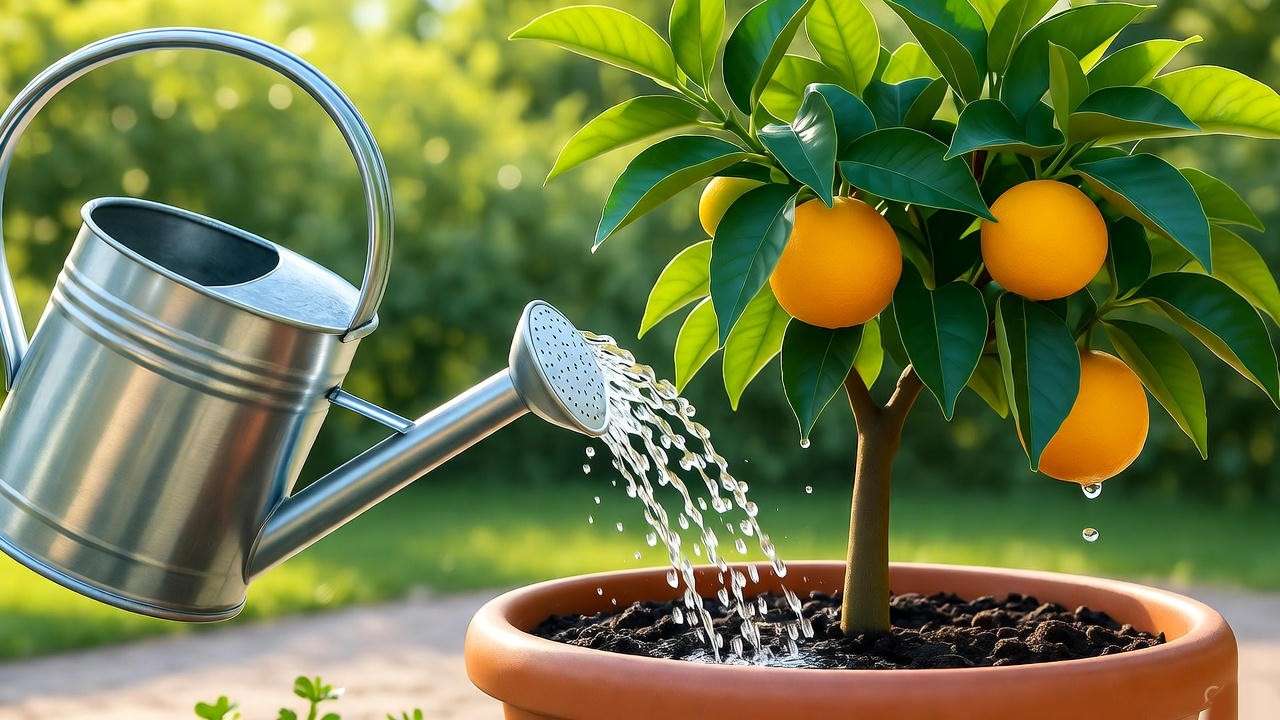Picture this: you step into your sun-dappled backyard, reach up to a lush Cara orange tree, and pluck a vibrant, seedless orange with pinkish-red flesh bursting with sweet-tart flavor. This isn’t a dream—it’s entirely possible with the right care! Growing a Cara orange tree is a rewarding journey for any gardener, offering both stunning greenery and delicious citrus fruit. Whether you’re a beginner or a seasoned grower, this comprehensive guide will equip you with expert-backed strategies to cultivate a thriving Cara orange tree. From planting to harvesting, we’ll cover every step to ensure your tree flourishes, producing abundant fruit and lush foliage. Backed by horticultural research and real-world gardening experience, this article is your roadmap to citrus success. Let’s dive in! 🍊
Understanding the Cara Orange Tree: A Citrus Gem 🍊
What Makes the Cara Orange Tree Unique?
The Cara orange tree (Citrus sinensis ‘Cara Cara’) is a standout in the citrus world, celebrated for its unique pink-fleshed, seedless fruit. A natural mutation of the navel orange, this variety boasts a sweet-tart flavor with hints of berry, making it a favorite for fresh eating, juicing, and culinary creations. Its vibrant, reddish flesh is rich in vitamin C and antioxidants, offering health benefits alongside its aesthetic appeal. According to the University of Florida’s IFAS Extension, the Cara Cara’s distinct coloration comes from lycopene, a pigment rarely found in other oranges. Gardeners love this tree for its manageable size (typically 8–12 feet tall in-ground or smaller in containers), making it suitable for backyards, patios, or even indoor spaces. Its glossy green leaves and fragrant white blossoms add year-round beauty, making it both a productive and ornamental choice. 🌸

Ideal Growing Zones and Climate Needs 🌞
Cara orange trees thrive in USDA Hardiness Zones 8–11, where warm days and cool nights create perfect conditions for citrus growth. They prefer temperatures between 55°F and 85°F, with minimal risk of frost, which can damage young trees or fruit. In regions like Southern California, Florida, or Texas, Cara orange trees flourish outdoors year-round. For gardeners in cooler climates (e.g., Zone 7), container gardening allows you to grow Cara oranges by moving the tree indoors during winter. For example, a gardener in Oregon might use a large pot to overwinter their tree in a sunny garage, ensuring year-round growth. Ensure your tree gets 6–8 hours of direct sunlight daily to maximize fruit production and foliage health. 🌿
Preparing to Plant Your Cara Orange Tree 🌱
Choosing the Right Cara Orange Tree
Selecting a healthy Cara orange tree is the first step toward a thriving grove. Look for nursery stock with strong, well-developed roots, vibrant green leaves, and no signs of pests or disease (e.g., yellowing or wilting). Grafted trees, which combine the Cara Cara scion with a hardy rootstock, are ideal for faster fruiting and disease resistance. Non-grafted trees grown from seed may take 7–10 years to bear fruit, while grafted trees can produce in as little as 3–5 years. Reputable nurseries like Monrovia or online suppliers such as FastGrowingTrees.com offer high-quality Cara orange trees. Pro Tip: Inspect the graft union (a slight bulge where the scion meets the rootstock) to ensure it’s healthy and intact. 🌳
Site Selection and Soil Requirements 🏞️
Choosing the right planting site is critical for your Cara orange tree’s success. Opt for a location with full sun exposure (6–8 hours daily), well-drained soil, and protection from strong winds, which can stress the tree or damage fruit. Cara orange trees prefer slightly acidic soil (pH 6.0–7.0) that’s loamy and rich in organic matter. Test your soil’s pH with a home testing kit, available at garden centers, and amend it with compost or sulfur if needed. For heavy clay or sandy soils, incorporate organic matter like aged manure or peat moss to improve drainage and nutrient retention. Example: A Florida gardener might mix pine bark into sandy soil to boost water retention, while a California grower could add compost to clay-heavy soil for better drainage. 🪴
Timing Your Planting ⏰
Timing is everything when planting a Cara orange tree. In warm climates (Zones 8–11), spring or early fall is ideal, allowing roots to establish before extreme heat or cold. Spring planting gives the tree a full growing season to develop, while fall planting suits regions with mild winters. For colder climates, plant in containers during spring and move indoors during winter. Avoid planting during peak summer heat, which can stress young trees. Case Study: A gardener in Arizona planted their Cara orange tree in March, allowing it to root deeply before summer, resulting in vigorous growth by fall. 📅
Planting Your Cara Orange Tree: Step-by-Step Guide 🌳
How to Plant for Success
Proper planting sets the foundation for a healthy Cara orange tree. Follow these steps:
- Dig the Hole: Create a hole twice as wide and as deep as the root ball (e.g., 24 inches wide for a 12-inch root ball).
- Enrich the Soil: Mix compost or aged manure into the excavated soil to provide nutrients.
- Position the Tree: Place the tree so the graft union is 2–3 inches above the soil line to prevent rot.
- Backfill and Water: Fill the hole with amended soil, tamp gently, and water deeply to settle the roots.
- Mulch: Apply 2–3 inches of organic mulch (e.g., wood chips) around the base, keeping it 6 inches from the trunk to avoid rot. Visual Aid Idea: A diagram showing proper planting depth can help readers visualize this process. 🌱

Container Planting for Flexibility 🪴
For gardeners in colder climates or small spaces, container planting is a game-changer. Choose a pot at least 18–24 inches in diameter with drainage holes to prevent waterlogging. Use a lightweight, well-draining potting mix designed for citrus, such as a blend of peat, perlite, and compost. Place the tree in a sunny spot (e.g., a south-facing patio) and rotate the pot every few weeks to ensure even light exposure. Repot every 2–3 years to refresh soil and prevent root-bound issues. Expert Tip: Elevate the pot slightly on feet to improve drainage and airflow. 🏺
Essential Care Tips for a Thriving Cara Orange Tree 🌿
Watering Needs: Finding the Balance 💧
Watering is critical for Cara orange trees, especially during their first few years. Aim for deep, infrequent watering—about 1–2 times per week, depending on climate and soil type. Young trees need 5–10 gallons per session, while mature trees may require more. Overwatering can cause root rot (signaled by yellowing leaves), while underwatering leads to wilting or fruit drop. Adjust based on seasons: increase watering in hot, dry summers and reduce in cooler winters. Pro Tip: Use a moisture meter to check soil moisture 6 inches deep, ensuring it’s moist but not soggy. 💦

Fertilizing for Vibrant Growth and Fruit 🍋
Fertilization fuels healthy growth and abundant fruit. Use a citrus-specific fertilizer (e.g., 10-10-10 or specialized blends like Espoma Citrus-tone) with high nitrogen and balanced micronutrients (zinc, iron, magnesium). Apply 3–4 times per year during the growing season (spring through early fall), following package instructions for dosage. Organic options like compost, fish emulsion, or worm castings work well for eco-conscious gardeners. Avoid fertilizing in winter, when growth slows. Warning: Over-fertilizing can burn roots or reduce fruiting, so measure carefully. 🍃
Pruning and Shaping Your Tree ✂️
Pruning keeps your Cara orange tree healthy and productive. Prune in late winter or early spring before new growth begins. Remove dead or damaged branches, suckers (shoots below the graft union), and overcrowded branches to improve air circulation and sunlight penetration. Use clean, sharp pruning shears to make clean cuts at a 45-degree angle. Pruning enhances fruit quality and prevents disease. Example: A pruning checklist might include: “Remove branches crossing others, thin dense areas, and cut suckers at the base.” 🌳
Pest and Disease Management 🐞
Cara orange trees face threats from pests like aphids, citrus leaf miners, and scale insects, as well as diseases like citrus greening or root rot. Inspect leaves regularly for signs of trouble, such as curling, spotting, or sticky residue. Control pests with organic solutions like neem oil or insecticidal soap, applied early in the morning. For diseases, ensure proper drainage to prevent root rot and consult local extensions for citrus greening management, as it’s a serious threat in some regions. Expert Insight: Integrated pest management (IPM) strategies from the University of California’s Agriculture and Natural Resources program emphasize prevention and minimal chemical use. 🕷️
Maximizing Fruit Production: Tips for a Bountiful Harvest 🍊
Encouraging Flowering and Fruit Set 🌸
A thriving Cara orange tree rewards gardeners with abundant, juicy fruit, but flowering and fruit set require specific conditions. Ensure your tree receives 6–8 hours of sunlight daily, as inadequate light can reduce blooms. Adequate nutrition, particularly phosphorus and potassium, supports flower development—use a balanced citrus fertilizer during the growing season. For indoor or low-pollinator environments, hand-pollination can boost fruit set: gently brush a soft paintbrush inside flowers to transfer pollen. Stressors like drought or extreme temperatures can cause flower or fruit drop, so maintain consistent watering and protect from heatwaves. Tip: Avoid pruning during the bloom period (spring) to preserve potential fruit. 🌼
When and How to Harvest Cara Oranges 🧺
Cara oranges typically ripen from December to March, depending on your climate. Look for vibrant orange peels with a slight give when gently squeezed, indicating peak ripeness. Unlike some citrus, Cara oranges don’t continue ripening off the tree, so harvest only when ready. Use clean pruning shears to cut the fruit with a short stem, avoiding damage to branches. Store harvested oranges in a cool, dry place or refrigerate for up to a month to maintain freshness. Example: A California gardener might harvest in January, storing oranges in a breathable mesh bag to enjoy them through February. 🍊

Troubleshooting Common Cara Orange Tree Problems ⚠️
Why Is My Tree Not Fruiting?
If your Cara orange tree isn’t producing fruit, several factors could be at play. Young trees (under 3–5 years for grafted varieties) often need time to mature before fruiting. Nutrient deficiencies, particularly nitrogen or micronutrients like zinc, can delay fruit set—test your soil and adjust fertilization accordingly. Over-pruning or improper pruning timing can remove flower buds, so stick to late winter pruning. Insufficient sunlight or pollination issues may also be culprits. Case Study: A Texas gardener waited four years for their Cara orange tree to fruit, resolving the issue by increasing sunlight exposure and applying a citrus-specific fertilizer, yielding a bountiful harvest in year five. 🌳
Addressing Leaf Drop and Yellowing 🍂
Leaf drop or yellowing is a common concern for Cara orange tree growers. Overwatering is a frequent cause, leading to root rot—check for soggy soil and reduce watering if needed. Nutrient deficiencies, especially nitrogen or iron, can cause yellowing (chlorosis); apply a chelated iron supplement or citrus fertilizer to correct this. Pests like spider mites or aphids may also trigger leaf issues—inspect undersides of leaves and treat with neem oil if needed. Pro Tip: Regularly inspect leaves during watering to catch problems early, ensuring quick intervention. 🍃
Seasonal Care Calendar for Cara Orange Trees 📅
A consistent care routine keeps your Cara orange tree healthy year-round. Here’s a seasonal guide:
- Spring: Fertilize with a citrus-specific blend, prune lightly to shape the tree, and monitor for pests like aphids as new growth emerges.
- Summer: Water deeply and consistently, especially during heatwaves, and apply mulch to retain moisture. Watch for leaf miners.
- Fall: Reduce watering as temperatures cool, prepare for harvest, and apply a final fertilizer dose in early fall.
- Winter: Protect from frost with blankets or by moving potted trees indoors. Avoid fertilizing, as growth slows. Visual Aid Idea: A downloadable PDF care calendar can help readers stay on track with seasonal tasks. 📆

Advanced Tips for Expert Growers 🌟
Grafting Techniques for Improved Varieties 🪴
For experienced growers, grafting can enhance your Cara orange tree’s performance. Grafting a Cara Cara scion onto a hardy rootstock, like trifoliate orange, improves disease resistance and vigor. The cleft graft method is effective: make a vertical cut in the rootstock, insert the scion, and secure with grafting tape. According to citrus research from the University of California, grafted trees often yield higher-quality fruit and adapt better to local conditions. Expert Insight: Grafting success rates improve with practice—aim for clean cuts and a sterile environment to prevent infection. 🌱
Optimizing for Commercial Production 🚜
For those scaling up to a small orchard, Cara orange trees can be a profitable venture. Plant trees 12–15 feet apart in rows to maximize sunlight and airflow. Expect mature trees to yield 100–200 oranges annually, depending on care and climate. Regular soil testing, drip irrigation, and integrated pest management (IPM) are critical for consistent production. Example: A small-scale Florida farmer reported success by using drip irrigation and organic pest controls, harvesting 150 pounds of Cara oranges per tree in peak seasons. 🍊
FAQs About Growing Cara Orange Trees ❓
Q1: How long does it take for a Cara orange tree to bear fruit?
A: Grafted Cara orange trees typically bear fruit in 3–5 years, while seed-grown trees may take 7–10 years. Patience and proper care are key!
Q2: Can I grow a Cara orange tree indoors?
A: Yes, with 6–8 hours of bright light (e.g., a south-facing window or grow lights) and proper container care, indoor growing is viable.
Q3: How do I protect my tree from frost?
A: Use frost blankets, string lights for warmth, or move potted trees indoors during cold snaps to shield from freezing temperatures.
Q4: Why are my oranges small or sour?
A: Small or sour fruit often results from insufficient water, nutrients, or sunlight. Ensure consistent care and test soil for deficiencies.
SEO Note: These FAQs target long-tail keywords like “how to grow Cara orange tree indoors” or “why is my Cara orange tree not fruiting,” boosting search visibility. ❓
Conclusion: Your Path to a Thriving Cara Orange Tree 🌳🍊
Growing a Cara orange tree is a journey of patience and reward, yielding vibrant fruit and lush foliage that elevate any garden. By choosing the right tree, planting properly, and following a consistent care routine—watering, fertilizing, pruning, and pest management—you’ll set the stage for a bountiful harvest. Whether you’re nurturing a single tree on your patio or dreaming of a backyard orchard, this guide provides the tools to succeed. Start today, and soon you’ll be savoring the sweet-tart delight of homegrown Cara oranges! Share your progress in the comments or join our gardening community for personalized advice. Call to Action: Download our free Cara Orange Tree Care Checklist to stay on track! 🌟













